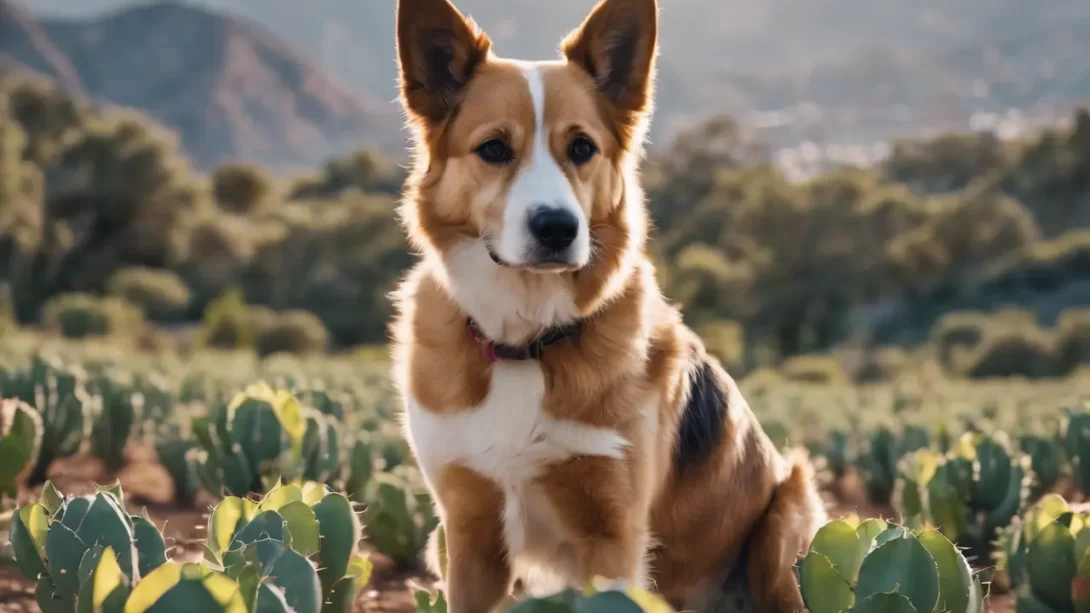Nopales, the pads of the prickly pear cactus, are a staple in many cuisines, celebrated for their unique flavor and health benefits. However, when it comes to sharing our meals with our canine companions, it’s crucial to understand what is safe and what isn’t. This article delves into whether nopales are a suitable addition to your dog’s diet, addressing both the potential benefits and risks.
What Are Nopales?
Nopales are the edible pads of the Opuntia cacti, commonly known as prickly pear cacti. These pads are a vibrant green and are famous for their distinctive, slightly tart flavor. Nutritionally, nopales are low in calories yet rich in vitamins (like Vitamin C and Vitamin A), minerals, and fiber, making them a healthy choice for humans. But do these benefits translate to our canine friends?
Can Dogs Eat Nopales? Safety Concerns
The short answer is yes, dogs can eat nopales, but with certain precautions. First and foremost, the spines on nopales must be thoroughly removed to prevent injury to your dog. Additionally, nopales contain oxalates, which, in large quantities, can cause health issues in dogs, including kidney stones. Therefore, while nopales are not toxic to dogs, they should be offered in moderation and prepared correctly to ensure safety.
Preparing Nopales for Dogs
When introducing nopales to your dog, preparation is key. Start by thoroughly cleaning the pads to remove all spines and eyes. It’s safest to cook nopales before serving, as cooking helps reduce their oxalate content. Boiling or steaming are the best methods, as they do not require adding fats or oils. Once cooked, nopales should be cut into small, bite-sized pieces to avoid any choking hazard. Remember, moderation is essential; begin with small portions to see how your dog reacts.
Health Benefits of Nopales for Dogs
Despite the precautions needed in preparation, nopales can be beneficial for dogs. They are a source of hydration and contain essential nutrients like vitamin C, which boosts the immune system, and calcium, important for bone health. The fiber in nopales can aid in digestion, and their low calorie and sugar content make them a good snack option, especially for overweight dogs. However, always introduce new foods slowly and in moderation to monitor your dog’s reaction.
Potential Side Effects
While nopales are generally safe for dogs, they can cause some side effects, particularly if consumed in large quantities. These may include gastrointestinal upset, such as diarrhea or vomiting, especially if your dog is not used to high-fiber foods. Additionally, dogs with a history of kidney stones should be given nopales cautiously due to their oxalate content. Always observe your dog after introducing any new food and consult your veterinarian if you notice any adverse reactions.
Alternatives to Nopales
If you’re looking for other safe and healthy vegetable options for your dog, there are plenty to choose from. Carrots, for instance, are an excellent low-calorie snack rich in fiber and beta-carotene. Green beans are another great choice, being low in calories and high in essential nutrients. Both of these vegetables are less likely to cause gastrointestinal upset compared to nopales. When introducing any new vegetable, do so gradually and ensure they are properly prepared – cooked and cut into appropriate sizes to prevent choking.
Comparing Nutritional Benefits
When compared to nopales, carrots and green beans offer different nutritional profiles. Carrots are higher in beta-carotene, which is beneficial for vision health, while green beans provide a good source of vitamins A, C, and K. Nopales stand out for their high fiber content and unique antioxidants. The choice of vegetable can depend on what nutritional gap you’re aiming to fill in your dog’s diet. However, remember that all treats and supplements should only make up a small portion of your dog’s overall diet.
Conclusion
Nopales can be a healthy addition to your dog’s diet when prepared correctly and served in moderation. They offer unique nutritional benefits but also come with potential risks that need to be carefully managed. Always consult with your veterinarian before introducing new foods into your dog’s diet, especially if they have existing health conditions. With a variety of vegetables available, you can safely add diversity to your dog’s meals, ensuring they get all the nutrients they need for a happy, healthy life.




